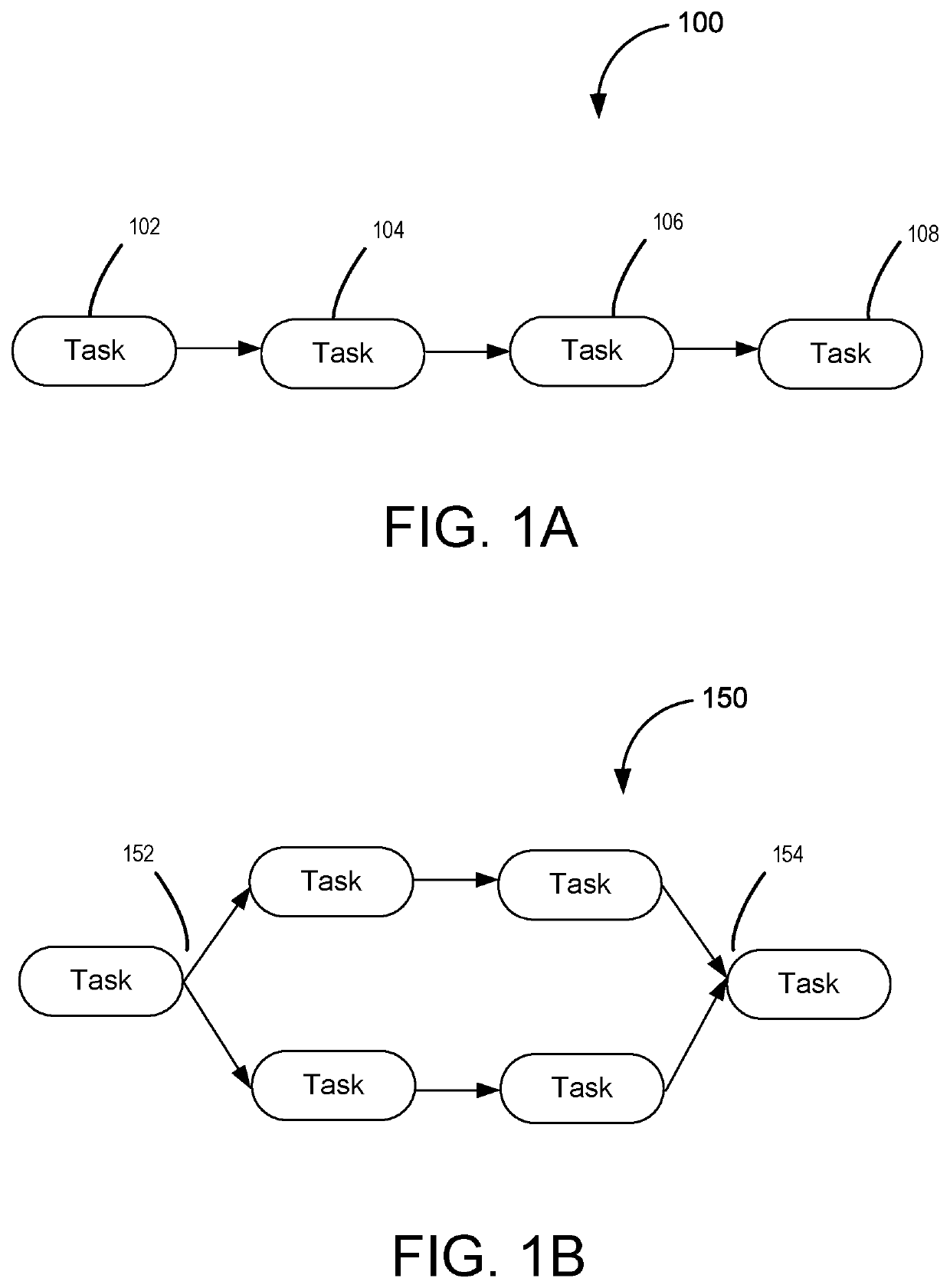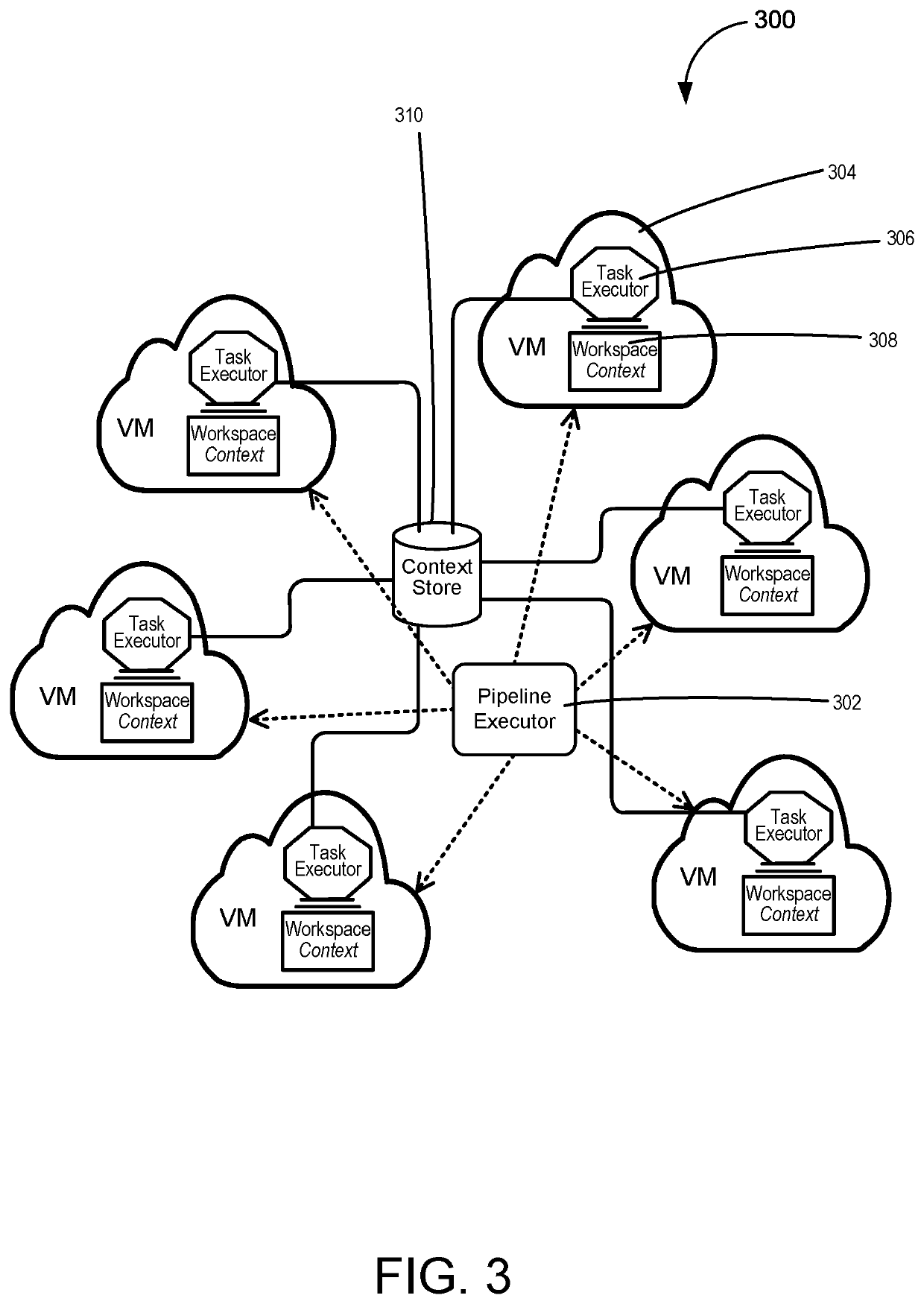Persistent context for reusable pipeline components
a pipeline component and context technology, applied in the field of persistent context for reusable pipeline components, can solve the problems of inherently inability to use statically configured inputs in pipelines, affecting the delivery speed of pipeline components,
- Summary
- Abstract
- Description
- Claims
- Application Information
AI Technical Summary
Benefits of technology
Problems solved by technology
Method used
Image
Examples
Embodiment Construction
[0018]Techniques are provided for managing and isolating build process pipelines. The disclosed system improves over conventional build pipelines by encapsulating the information needed for each build process step within a structure referred to as a build context. This encapsulated information may be accessible to the build process step via the build context. Each build process step can receive input from the build context, and can generate a child build context as output. Accordingly, the build pipeline may be parallelized, duplicated, and / or virtualized securely and automatically, and the build context can carry, organize, and isolate data for each task. The build context from each step can also be stored in a record and subsequently inspected, e.g. by a developer for problem-solving.
[0019]Continuous Delivery (CD), as used herein, refers to a process within software engineering where software is automatically compiled, tested, and deployed as part of an orchestrated process on a v...
PUM
 Login to View More
Login to View More Abstract
Description
Claims
Application Information
 Login to View More
Login to View More - R&D
- Intellectual Property
- Life Sciences
- Materials
- Tech Scout
- Unparalleled Data Quality
- Higher Quality Content
- 60% Fewer Hallucinations
Browse by: Latest US Patents, China's latest patents, Technical Efficacy Thesaurus, Application Domain, Technology Topic, Popular Technical Reports.
© 2025 PatSnap. All rights reserved.Legal|Privacy policy|Modern Slavery Act Transparency Statement|Sitemap|About US| Contact US: help@patsnap.com



